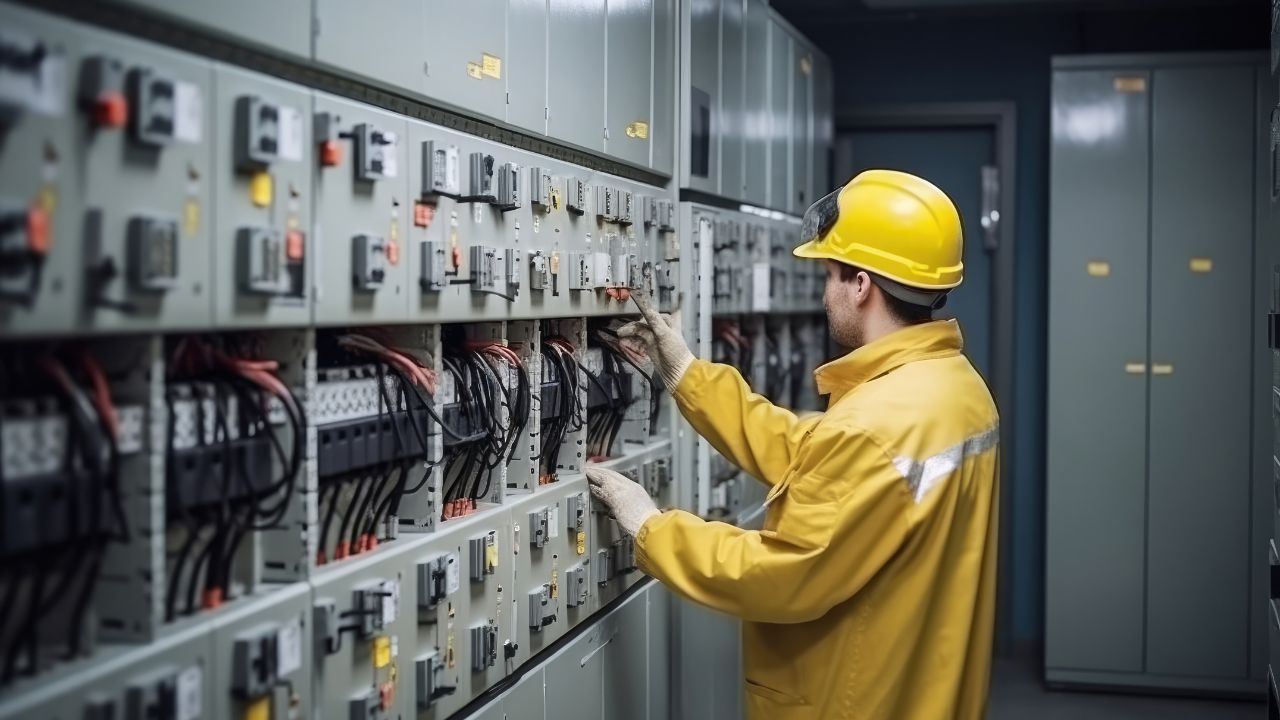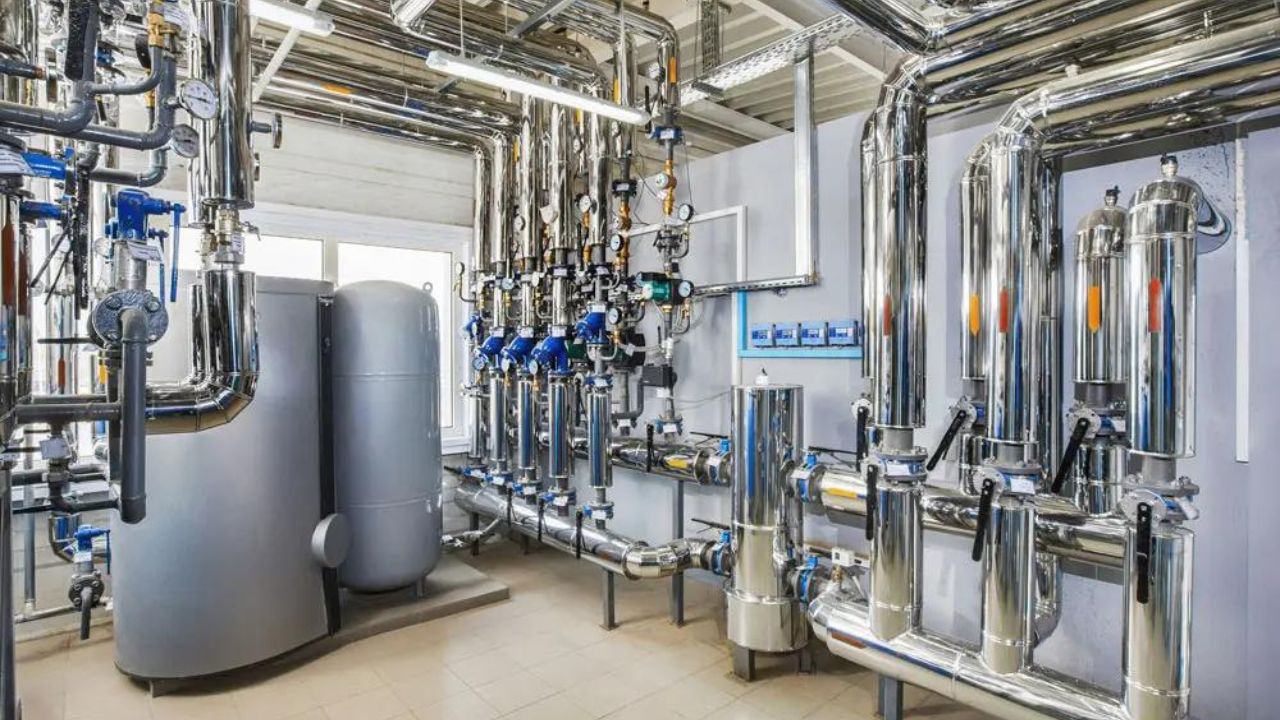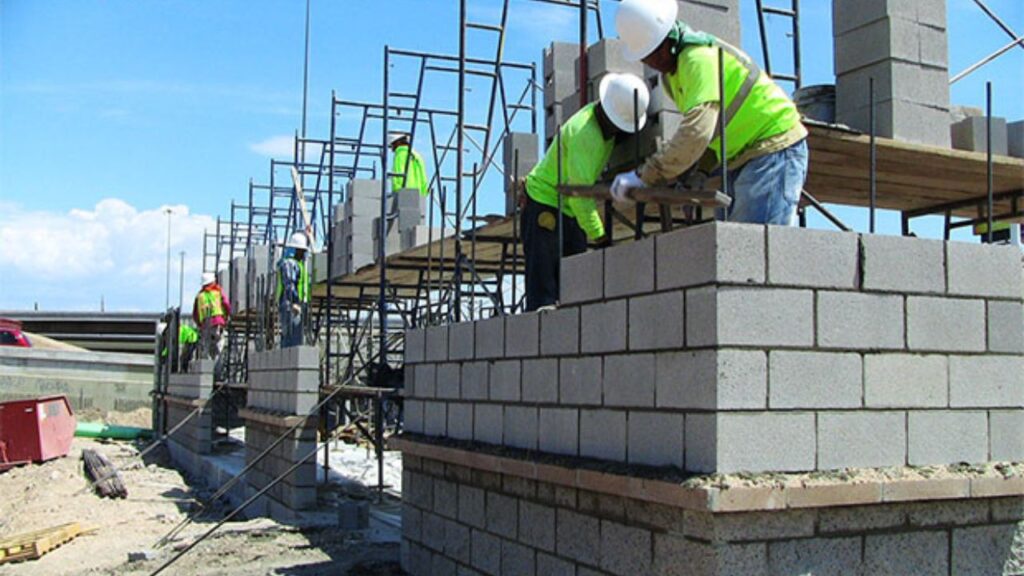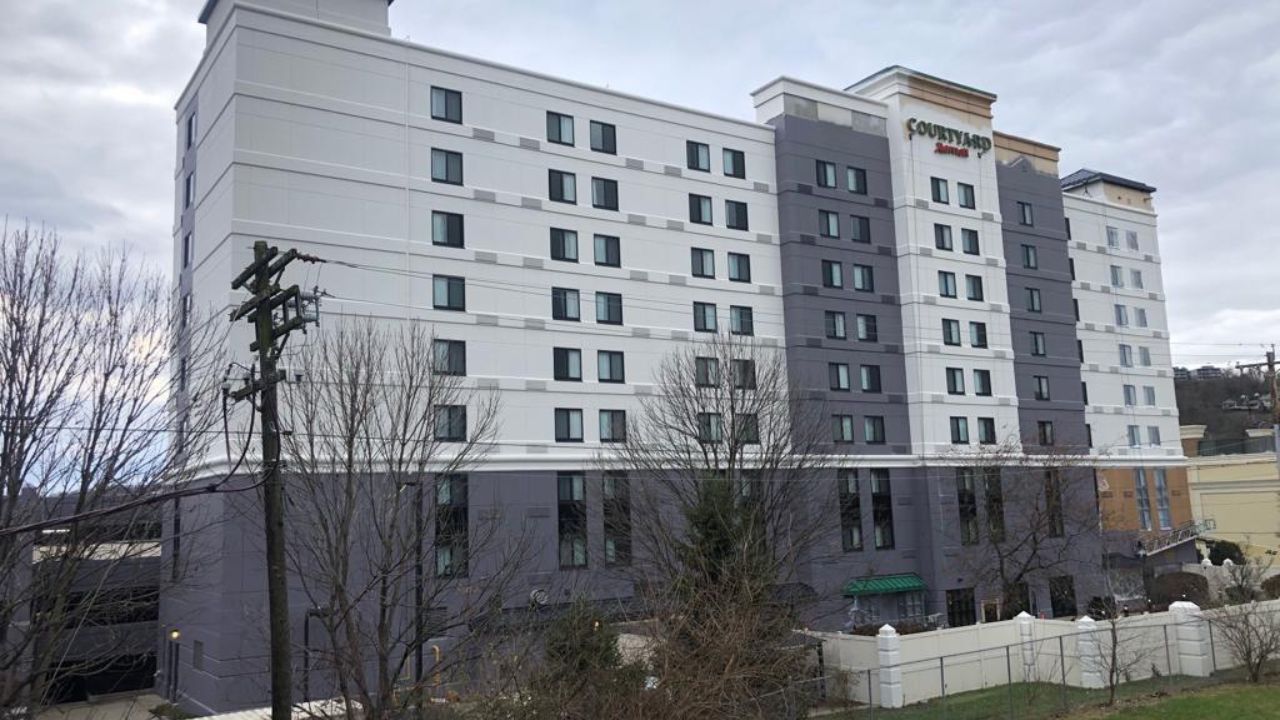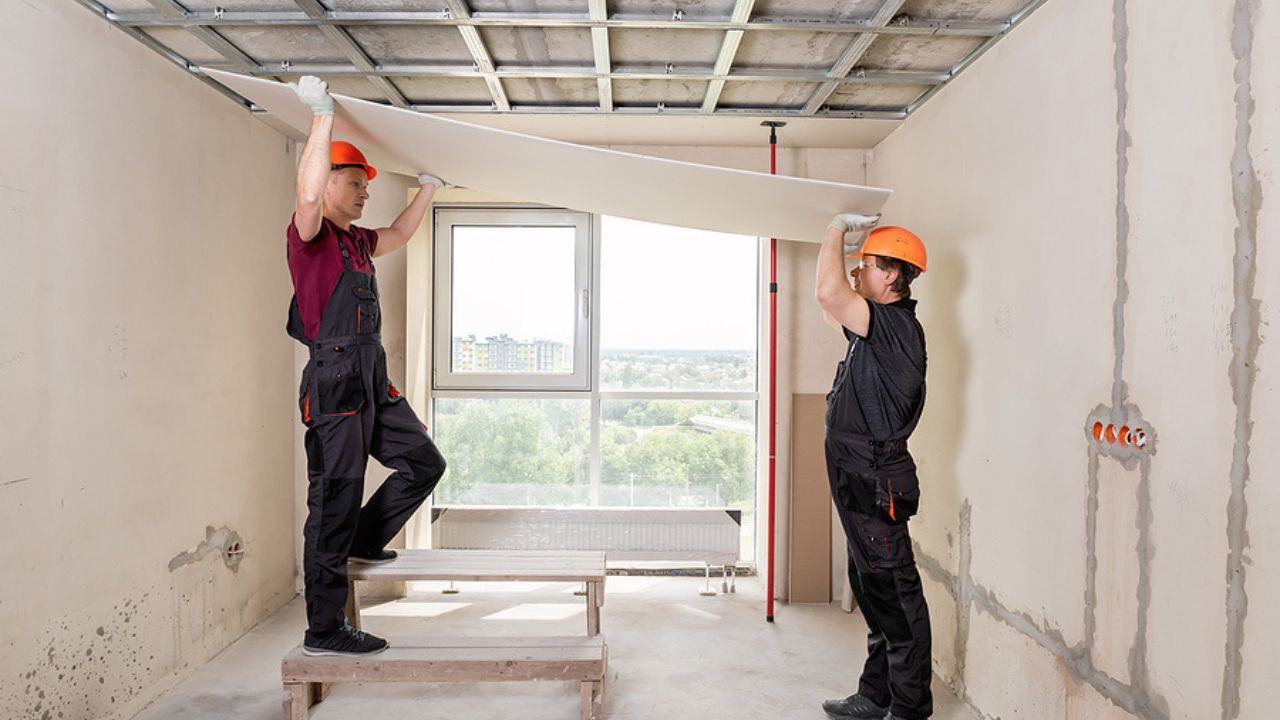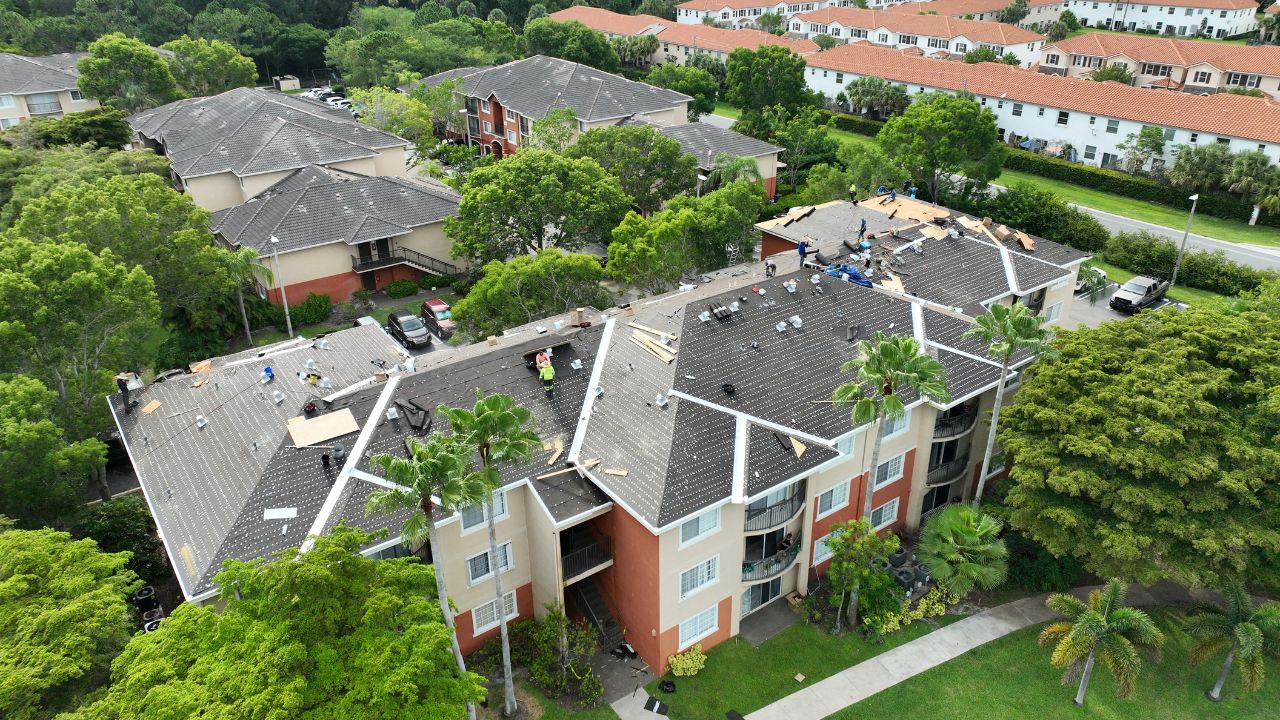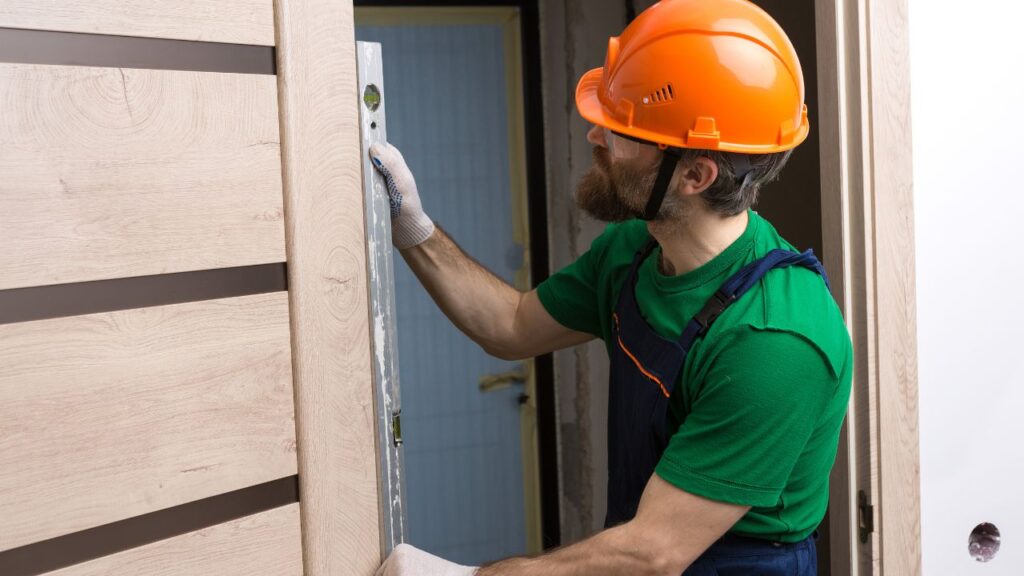- Homepage
- Blogs
Home Security System Cost Estimator
Leading provider of home security system estimating.
Homeowners can choose between wired or wireless home security systems, depending on their preferred level of protection and whether their home has existing technical setups. The cost of installing a home security system generally falls between $900 and $2,400, with most people spending around $1,680 for a basic monitored system with a three-year contract, which includes the monitoring fees.
For those on a tight budget, a starter system with a few basic alarms and no professional monitoring can cost as little as $96. On the other hand, a high-end professionally monitored system with features like smart locks, extra motion sensors, and smoke detectors can cost as much as $5,400, monitoring fees included.
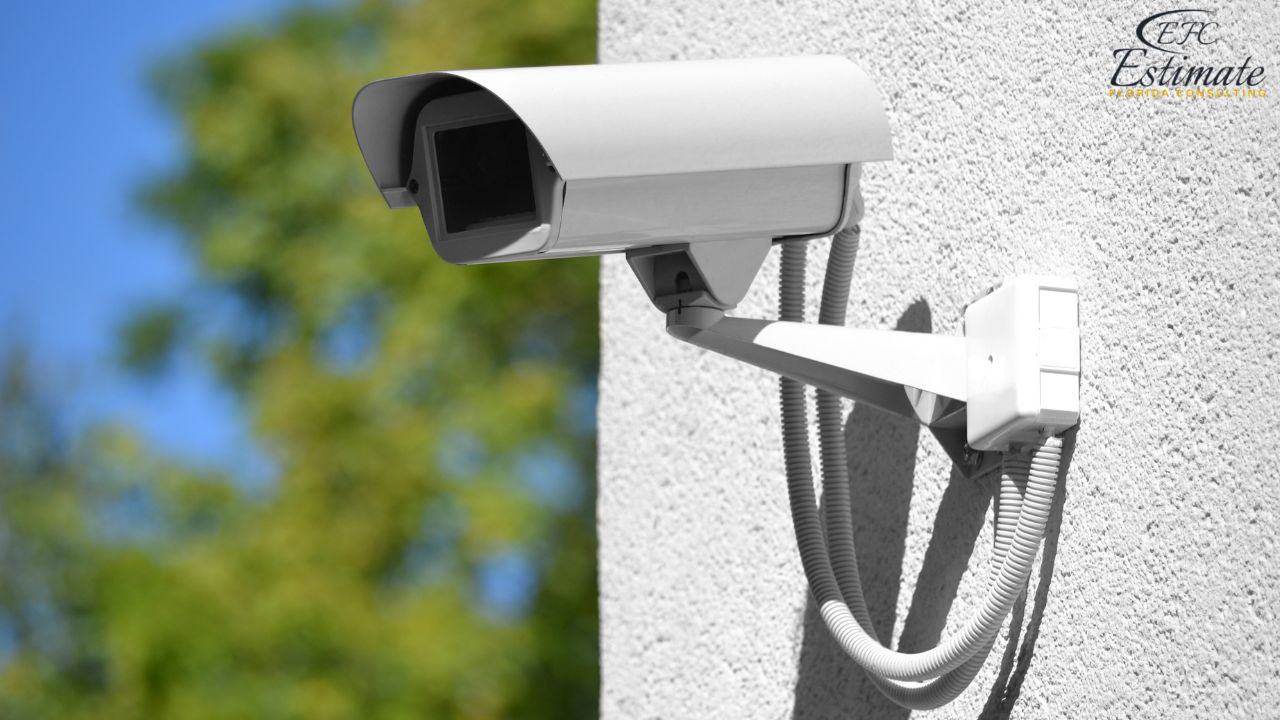
Home Security System Installation Costs
Type of Cost | Cost Range |
National Average Cost | $1,680 |
Typical Price Range | $900 – $2,400 |
Low-End Cost | $96 |
High-End Cost | $5,400 |
Home Security System Cost Breakdown
Setting up a home security system depends on whether you choose a wireless system or a wired system. Wireless systems are simple and can typically be installed by homeowners in under an hour. However, wired systems require professional installation to ensure the wiring is safe and properly connected for long-lasting performance. Most security companies hire local contractors to handle the installation.
Installation and Equipment Costs
The total cost of a home security system depends on the type of system you choose and any existing setup that might support your upgrades. For a basic wired system, installation can take just a few hours. For advanced systems featuring high-end cameras, motion sensors, and smart home automation, installation may take up to two days. Professional installers typically charge $75 to $180 per hour, depending on the complexity of the setup and the location.
Equipment costs vary widely, ranging from $240 to $1,200, depending on the features and brand. It’s also essential to factor in activation fees, which are charged when you turn the system on for the first time. These fees generally range from $30 to $120.
Average Cost Breakdown
On average, installing a home security system costs around $1,680, with updated pricing details. Here’s a breakdown:
Category | Updated Average Costs |
Activation Fees | $120 |
Labor | $480 |
Monitoring | $480 |
Equipment | $600 |
Monitored vs. Unmonitored Security Systems
When it comes to home security, you have two main options: monitored and unmonitored systems. Each comes with its own advantages and costs, so understanding the differences can help you make the right choice for your home and budget.
Unmonitored Security Systems: Affordable but DIY
Unmonitored home security systems are popular because they are affordable and easy to install. Since there’s no professional monitoring service, homeowners save money by avoiding monthly fees. Typically, these systems rely on sensors and alarms to deter intruders, but the responsibility for responding to an alert falls entirely on you.
For example, if a sensor is triggered while you’re away, the system might sound an alarm, but no one will contact emergency services on your behalf. A common variation of unmonitored systems is the self-monitoring security system. These systems notify you or a designated group of contacts through a smartphone app when a sensor detects an issue, allowing you to check on your home remotely. Prices for basic unmonitored systems range from $100 to $600, depending on the number of sensors and additional features like cameras or smart home integration.
Monitored Security Systems: Professional Support at a Price
Monitored home security systems, on the other hand, provide a higher level of security and convenience. When a sensor is triggered, the system notifies a professional monitoring center. The center evaluates the situation and contacts emergency services if necessary. This added layer of protection gives homeowners peace of mind but comes at a higher cost.
Monthly fees for monitored systems range from $4 to $72, depending on the provider and level of service. Some companies offer discounted or even free equipment if you sign a long-term contract, typically three years. Equipment costs for these systems generally range from $720 to $2,592, a 20% increase from basic setups.
Professional installation is often required for monitored systems, adding an additional cost of $110 to $480. However, some modern systems offer DIY installation options, which can save you money upfront.
Making the Right Choice
The decision between monitored and unmonitored systems depends on your needs, budget, and how much responsibility you’re comfortable taking for your home’s security. Monitored systems provide around-the-clock professional support but are more expensive. Unmonitored systems are budget-friendly and flexible but require you to act quickly in an emergency.
Wired vs. Wireless Security Systems: Which is Right for You?
When it comes to securing your home, you have two main options: wired and wireless security systems. Both have their advantages and disadvantages, so understanding the differences can help you make the best choice for your needs and budget.
Get Acquainted with Estimation
Mastering Bids: 12 Pro-Level Bidding Tips for Construction Managers
Top 10 Tips to Running a Successful Construction Business
How Wired Security Systems Work?
In a wired security system, sensors are physically connected to the central control panel using cables installed within the walls and floors. These systems typically communicate with monitoring stations through a landline, data network, or fiber optic cable. While landlines have traditionally been the go-to choice, many homeowners now prefer fiber optic connections or high-speed internet for their reliability and faster communication.
One downside of wired systems is their vulnerability to interruptions—if the phone line is cut, the system may fail unless it has a cellular backup. Newer models often include this backup, offering improved reliability over older versions. However, installing a wired system in an existing home can be more complex and costly, as it may involve drilling into walls and repairing drywall. Drywall repairs after installation usually range from $90 to $420, reflecting a 20% increase from average costs.
How Wireless Security Systems Work?
Wireless systems are more modern and flexible. Sensors communicate with the control panel wirelessly, often using radio frequency. The control panel connects to a monitoring station via your broadband internet or a cellular network, eliminating the need for physical wiring. These systems are easy to install and upgrade, making them a popular choice for homeowners who want simplicity and scalability.
However, wireless systems have their drawbacks. They can be affected by interference from household devices like microwaves or baby monitors, or even structural elements within the home. Despite this, the convenience and ease of upgrading components—like swapping sensors or adding smart features—make wireless systems a highly versatile option.
Cost Differences: Wired vs. Wireless Systems
In general, wireless systems are more expensive upfront than wired ones. However, the total cost depends on factors such as installation complexity and the number of components required. While hardwired systems have lower component costs, their professional installation fees can increase your overall expenses.
For a standard wired system, expect to pay between $1,500 and $4,200, including installation and repair work. Wireless systems typically range from $2,000 to $5,000, as they require advanced technology and often come with smart features.
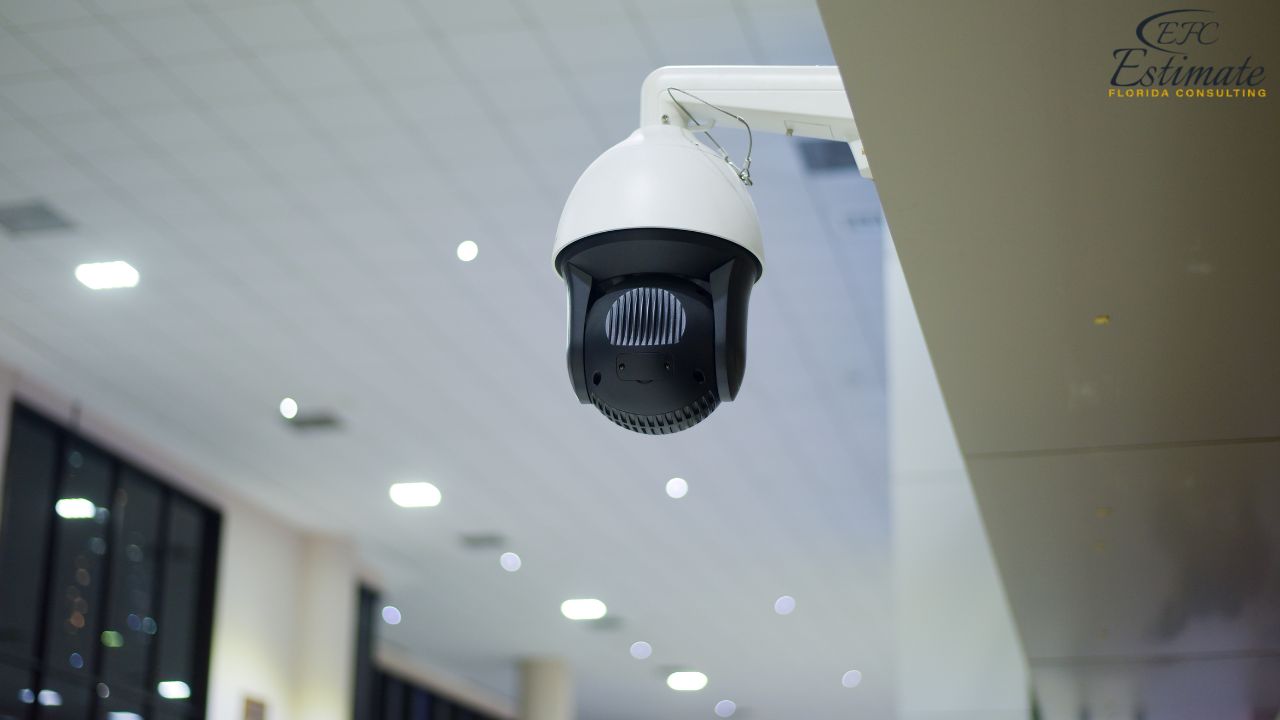
Hybrid Security Systems
Some homeowners opt for hybrid systems, which combine wired and wireless technology. For example, sensors may communicate wirelessly with the control panel, while the system uses a landline or fiber optic connection for external monitoring. Hybrid systems offer flexibility and reliability but can also come with higher installation and equipment costs, averaging $2,500 to $6,000.
Considerations for Choosing Your System
When deciding between wired and wireless systems, think about your home’s structure, your budget, and your long-term needs.
- Wired systems are ideal for new construction or homes undergoing renovations since cables can be easily installed during the build. They are less prone to signal interference but may require significant wall repairs in finished homes.
- Wireless systems are better for homeowners looking for flexibility, easier installation, and the ability to upgrade. However, they may experience signal disruptions and tend to cost more upfront.
By carefully evaluating these factors and understanding the true costs—including potential drywall repairs, additional components, or professional installation—you can choose a security system that fits your needs and provides peace of mind.
Home Security System Monthly Costs by Company
Choosing the right home security system means comparing not only the features but also the costs. Monthly monitoring fees vary depending on the provider, the level of security, and additional features such as smart home integration and professional monitoring. Most companies offer basic, intermediate, and advanced plans, with costs ranging from $4 to $72 per month. Here’s an updated look at the monthly fees from top security companies:
Company | Updated Monthly Cost |
Ring | $4 – $12 |
Abode | $7 – $24 |
SimpliSafe | $18 – $30 |
Cove | $18 – $42 |
Nest | $24 – $36 |
Xfinity | $36 – $48 |
Link Interactive | $36 – $54 |
Vivint | $36 – $54 |
CPI | $36 – $60 |
Cox | $36 – $66 |
ADT | $42 – $60 |
AT&T | $48 |
Brinks | $48 – $60 |
Frontpoint | $54 – $60 |
Guardian | $54 – $72 |
Ring Security System
Ring’s plans start at $4 to $12 per month, making it one of the most budget-friendly options. With no contracts or professional installation required, it’s ideal for DIY homeowners. Equipment starts at $240 for a base package, including a control station, motion detector, contact sensor, and keypad. Optional add-ons like two-way audio or cameras increase the cost.
Ring also offers a $48 Ring Assist plan, which includes free replacements for damaged or stolen equipment, a two-year extended warranty, and lifetime purchase protection.
Abode Home Security
Abode provides affordable on-demand monitoring, with monthly fees ranging from $7 to $24. The entry-level Essentials Starter Kit starts at $276 and includes a Gateway hub, motion sensor, and mini window/door sensor. Professional installation costs $120, and the activation fee is $30. While the Pro Plan includes 4G cellular backup, basic kits come with limited devices.
Abode’s flexible, no-contract plans and compatibility with smart home devices make it a popular choice for budget-conscious homeowners.
SimpliSafe Home Security
SimpliSafe plans cost $18 to $30 per month, with upfront equipment costs of $276 to $588. The system is DIY-friendly and integrates with smart home devices. Professional installation is available for $96, and the company offers a three-year warranty and a 60-day return policy.
Although SimpliSafe lacks advanced features like facial recognition, its low monitoring fees and straightforward installation appeal to many homeowners.
Cove Security
Cove’s monitoring plans range from $18 to $42 per month, with equipment costs starting at $120 to $180. The first indoor camera is free, while additional cameras cost $36 each. Cove’s DIY installation eliminates activation and installation fees. However, contracts may include cancellation fees of $300 if equipment isn’t paid off.
Cove’s Basic plan includes a one-year warranty, while the Plus plan extends coverage to a lifetime warranty.
Nest Security System
Nest offers plans costing $24 to $36 per month, with additional self-monitoring options starting at $6 per month through Nest Aware. Equipment costs begin at $480, with professional installation recommended for optimal results. Nest integrates seamlessly with Google smart home devices but lacks features like panic buttons and glass-break sensors.
Xfinity Home Security
Xfinity’s monthly plans cost $36 to $48, with equipment starting at $432. Professional installation fees range from $72 to $120, and contracts last a minimum of two years. Xfinity offers customizable setups and smart home compatibility, but early cancellation fees and limited availability may deter some homeowners.
Link Interactive Home Security
Link’s monthly fees range from $36 to $54, with flexible one- to three-year contracts. Equipment costs between $120 and $240, and there are no activation or installation fees. Link’s DIY-friendly system integrates with Amazon Alexa and other smart home devices.
Vivint Home Security
Vivint plans cost $36 to $54 per month, with equipment costs starting at $720. Professional installation is included, but the system requires a five-year contract for financing. Month-to-month monitoring is available if equipment is paid upfront. Activation fees start at $120.
CPI Security
CPI charges $36 to $60 per month, with equipment costs starting at $600. Professional installation and smart home compatibility are included. CPI’s lengthy five-year contracts may not suit everyone, but the company compensates for fines due to false alarms and offers free equipment inspections after emergencies.
Cox Security System
Cox monitoring costs $36 to $66 per month, with equipment starting at $120 to $240. Professional installation is required, and a $60 activation fee applies. Cox systems work well with existing internet or phone services but are only available in select states.
ADT Home Security
ADT’s monitoring plans range from $42 to $60 per month, with equipment costs included in a 36-month contract. Installation fees are $120, and ADT offers a six-month money-back guarantee. ADT is ideal for homeowners looking for reliable monitoring and extensive smart home integration.
AT&T Home Security
AT&T’s monthly cost is $48, with equipment priced between $660 and $840. A two-year contract is required, and the system includes a keypad, motion sensor, and several contact sensors. AT&T offers free installation and a 14-day return policy.
Brinks Home Security
Brinks’ plans cost $48 to $60 per month, with equipment starting at $240. Professional installation is included in higher-tier packages, and the company offers a 30-day trial period. Financing is available with a strict three-year contract.
Frontpoint Security
Frontpoint charges $54 to $60 per month, with equipment costs of $384 to $576. Contracts require a one- or three-year commitment, and early cancellations incur penalties. Frontpoint systems are pre-programmed for DIY installation, with professional support readily available.
Guardian Home Security
Guardian’s plans cost $54 to $72 per month, with equipment starting at $180. Professional installation is included, but contracts last five years, and early cancellations are expensive. Guardian offers discounts for first responders and military members, along with comprehensive warranties.
Win More Projects With Us
Home Security Equipment Costs
When setting up a home security system, the essential equipment typically includes a central control panel, two or three door/window sensors, a motion detector, and a siren. The control panel often features a touchscreen or keypad, allowing you to easily activate or deactivate the system, whether you’re staying home or heading out.
These basic components form the foundation of your home security system. Depending on your specific needs, you can enhance your setup by adding extra features like floodlights, additional motion sensors, or more alarm sensors. Many home security providers offer these components in starter kits, but you can also purchase individual items as backups or replacements. Some companies even offer free replacements for broken equipment as part of their warranty or service agreements.
Here’s an updated cost breakdown for common home security equipment:
Equipment | Updated Cost Range |
Motion Sensor | $24 – $240 |
Siren | $30 – $240 |
Floodlight | $30 – $330 |
Door/Window Alarm Sensors | $30 – $360 |
Central Control Panel | $60 – $480 |
Home Security Add-On Costs: Enhancing Your Protection
A reliable security system provides essential 24/7 monitoring and quick response, but additional upgrades can greatly enhance your home’s safety and convenience. These add-ons offer advanced features for more comprehensive security coverage, such as emergency signals, enhanced monitoring, and integration with smart home devices.
For example, many systems offer duress signals, which let you discreetly alert the monitoring center by entering a secondary code if an attacker forces you to disarm your alarm. Panic buttons, set-up guidance, and programming instructions are also useful, ensuring your system is activated and functioning correctly.
Other upgrades include emergency response plans, where systems verify emergencies via text before dispatching help to minimize false alarms. Add-ons like key fobs, surveillance cameras, fire/smoke/CO2 detectors, and smash crash protection can help safeguard your home from various threats. However, keep in mind that some providers require a higher-tier plan to support these additional features, which could increase your overall monthly costs.
Here’s an updated breakdown of common security add-ons and their costs:
Security Add-Ons | Updated Average Cost |
Panic Button | $24 – $48 |
Key Fob | $24 – $84 |
Duress Signal | $24 – $180 |
Medical Alert Monitoring | $30 – $60 |
Fire/Smoke/CO2 Detector | $36 – $120 |
Emergency Response Plans | $36 – $360 |
Indoor/Outdoor Cameras | $60 – $360 |
Video Doorbell Camera | $60 – $480 |
Triggered Sensors | $90 – $480 |
Wireless Control | $180 – $600 |
Smash Crash Protection | $180 – $600 |
Remote Monitoring | $180 – $720 |
Surveillance Monitoring | $240 – $840 |
24/7 Live Camera Recording | $264 – $960 |
Panic Button
A panic button is a simple, portable device that can alert authorities in case of an emergency. These are especially useful for elderly family members or during home invasions. They range from $24 to $48, depending on the brand and compatibility with your system.
Key Fob
Key fobs allow you to arm or disarm your security system remotely, adding convenience for households with multiple members. Costs range from $24 to $84, with some systems bundling them in starter kits.
Duress Signal
Duress signals enable you to subtly notify authorities in dangerous situations, like home invasions, without raising suspicion. These features are available for $24 to $180, depending on the provider and system compatibility.
Medical Alert Monitoring
This feature is essential for elderly or medically vulnerable individuals, connecting them to help during health emergencies. Monthly costs range from $30 to $60.
Fire, Smoke, and CO2 Detectors
These devices protect against fire hazards and dangerous gas leaks. Depending on their sensitivity and smart features, prices range from $36 to $120 per detector.
Emergency Response Plans
Advanced systems offer emergency response plans to ensure the right help is dispatched quickly. These plans cost $36 to $360, based on the level of customization and monitoring.
Cameras and Doorbell Cameras
Indoor and outdoor cameras offer added security and monitoring, with costs ranging from $60 to $360. Video doorbells, which add a layer of convenience and protection at your entry points, cost between $60 and $480.
Triggered Sensors
Triggered sensors detect motion, glass breaking, or other security breaches. Costs vary from $90 to $480, depending on the complexity and features.
Wireless Controls and Smash Crash Protection
Wireless controls enable remote system management, while smash crash protection ensures your system continues to function even if the control panel is damaged. Each feature ranges from $180 to $600.
Remote Monitoring and Live Recording
Remote monitoring and live camera recording offer 24/7 surveillance, with costs ranging from $180 to $960 for advanced systems with long-term recording capabilities.
Home Security Monitoring Plans and Contracts
When it comes to home security, contracts and monitoring plans are just as important as the equipment itself. While the industry standard has traditionally been a three-year contract, many companies now offer more flexible options, including month-to-month, annual, or no-contract plans. Understanding the terms of your agreement is crucial to avoid unexpected costs and ensure the plan fits your needs.
Contract Length Options
Most companies still offer three-year contracts, which are often bundled with lower upfront equipment costs. However, breaking these contracts early can lead to hefty fees—sometimes totaling hundreds of dollars—to cover the remaining balance. Some plans with shorter terms, such as annual or month-to-month options, provide greater flexibility but may cost more per month.
For those who don’t want to commit long-term, no-contract options from providers like SimpliSafe and Abode are an excellent choice. These allow you to pay month-to-month and cancel anytime without penalty.
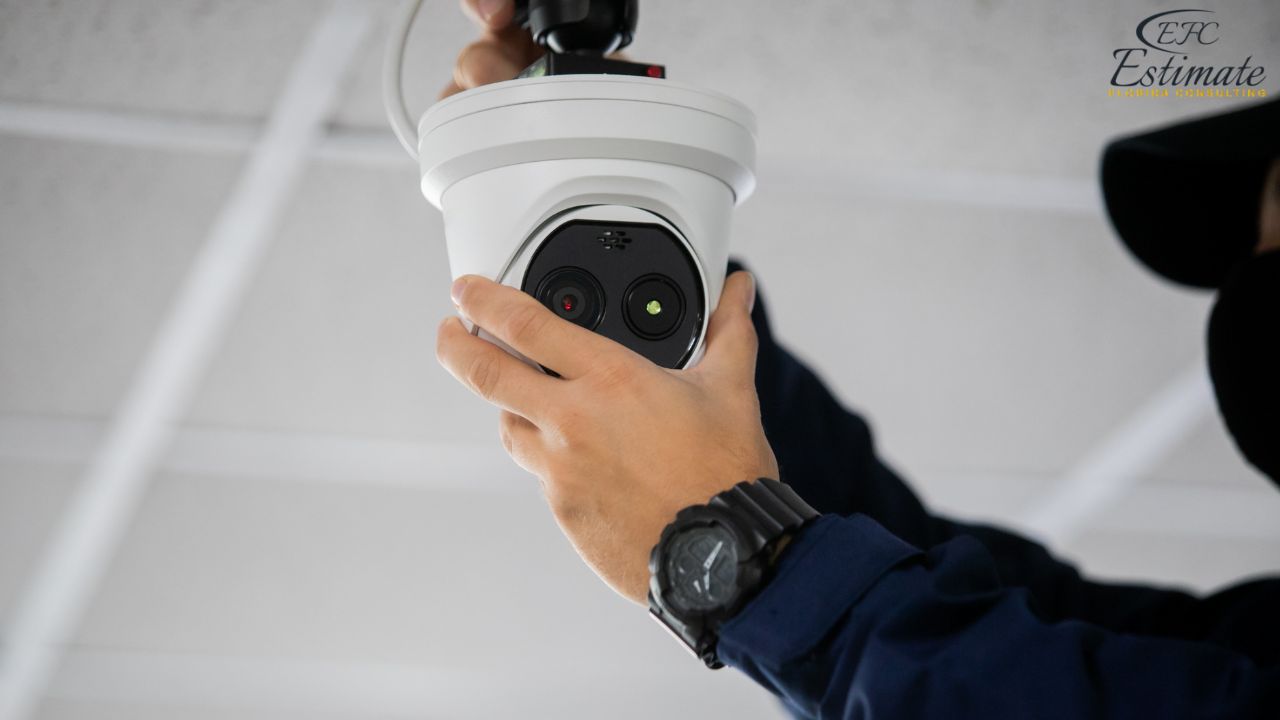
What’s Included in Monitoring Plans?
Most basic plans include 24/7 professional monitoring, which alerts authorities in case of a break-in or emergency. Starter plans typically cost $30 to $60 per month, depending on the company and features. Premium plans, which cost $45 to $72 per month, often include advanced features like:
- Home automation for smart locks, lights, and thermostats.
- Live video monitoring with cloud storage for security footage.
- Environmental monitoring for fire, carbon monoxide, and water leaks.
- Medical emergency alerts for elderly or at-risk residents.
Hidden Fees and What to Watch For
Contracts often include fees that may not be immediately obvious. It’s essential to read the fine print and clarify any uncertainties before signing. Key fees to look out for include:
- Cancellation Fees: Breaking a contract early can cost $200 to $400 or more, depending on the provider and how much time is left.
- Reinstallation/Moving Fees: If you relocate, you may have to pay $120 to $180 for moving or reinstalling your system.
- Equipment Leasing Fees: Some companies require you to lease their equipment instead of purchasing it outright, adding an extra monthly expense.
Reading and Understanding the Contract
Before signing, take your time to carefully review the contract and ensure you understand the following:
- Cancellation Policy: What happens if you end the contract early?
- Price Increases: Is the monthly cost locked in, or can it rise over time?
- Equipment Ownership: Do you own the system outright, or is it leased?
- Additional Fees: Are there costs for installation, activation, or repairs?
It’s also worth comparing one-year vs. multi-year contracts. A longer contract might save money in the long term if you’re planning to stay in your home for several years. However, renters or those who may move soon might prefer shorter or no-contract options for flexibility.
Monthly Contracts: Pros and Cons
Month-to-month contracts are becoming increasingly popular for their flexibility. These plans are ideal for renters or homeowners who want the freedom to cancel or switch services without penalty. With no long-term commitment, you can evaluate the service on an ongoing basis. However, month-to-month plans often come with higher upfront equipment costs, ranging from $360 to $720, as they’re not subsidized by a long-term agreement.
No-Contract Options
Providers like SimpliSafe and Abode offer no-contract plans, allowing you to pay as you go. This eliminates cancellation fees entirely and gives you control over how long you use the service. These plans often start at $20 to $30 per month and are a great choice for those who value flexibility over long-term discounts.
Smart Home Security System Costs
Smart home security systems combine cutting-edge technology with home automation, offering seamless control over lights, locks, thermostats, appliances, and security features. While they’re more expensive than traditional systems, their convenience and advanced features are making them increasingly popular with homeowners who want an all-in-one solution.
Benefits of Smart Home Security Systems
The biggest advantage of smart home security systems is the convenience they provide. You can manage your entire home with just a smartphone, tablet, or voice assistant like Alexa or Google Assistant. Many systems even allow you to set personalized preferences, such as turning on lights or adjusting the thermostat as you arrive home. Voice commands add another layer of simplicity, enabling hands-free control.
However, smart systems do come with some downsides. They rely heavily on technology, so a good internet connection is essential. Additionally, the higher upfront cost and installation fees might not be practical for every family. That said, many systems are customizable, allowing you to start with basic features and expand as your budget allows.
Smart Home Security System Costs
The cost of a smart home security system, including installation, typically ranges from $840 to $6,000, depending on the brand and the level of automation. Here’s a breakdown of some common upgrades:
- Smart Locks: These secure your home and allow remote control or automation through your smartphone. Costs range from $180 to $480 per lock.
- Smart Lighting: Automating the lights in your home can cost $1,200 to $3,600, depending on the number of rooms and the type of fixtures.
- Smart Alarms: Wi-Fi, Bluetooth, or Z-Wave-enabled alarms allow remote operation and cost between $300 and $600.
Customizing Your Smart Home Security
Not everyone needs a fully automated home. Many providers offer tiered packages so you can choose features that best meet your needs. For example, if you’re focused on security, you might opt for smart locks and alarms first, adding smart lighting or thermostats later.
Pros and Cons of Home Security Systems
Installing a home security system can bring peace of mind and offer advanced protection for your home and family. Modern systems go beyond just deterring burglars—they also integrate smart home features like automated alarms, climate control, motion sensors, smart outlets, and door controls. While the benefits often outweigh the costs, it’s important to understand both the advantages and potential drawbacks.
Pros of Home Security Systems
- Enhanced Protection:
Security systems are designed to protect against intrusions, burglaries, and even environmental hazards like fire or gas leaks. Many systems now include 24/7 professional monitoring, ensuring a rapid response to emergencies. - Smart Home Integration:
Many systems allow you to automate and control devices such as lights, thermostats, and cameras remotely via an app. This adds convenience and energy efficiency while enhancing security. - Deterrent to Criminal Activity:
Visible security cameras or signs indicating a monitored system can deter potential intruders, significantly reducing the risk of break-ins. - Insurance Savings:
Homeowners with security systems often qualify for discounts on their home insurance policies, which can help offset installation and monitoring costs. - Customizable Features:
Security systems can be tailored to your needs, whether you want basic protection or advanced options like two-way audio, motion detection, and glass-break sensors.
Cons of Home Security Systems
- Cost of Installation and Monitoring:
While the benefits are significant, the upfront costs can be steep. Professional installation costs range from $120 to $600, depending on the complexity of the system. Monthly monitoring fees add another $30 to $72, which can add up over time. - Potential Intrusiveness:
Some homeowners find constant alerts or reminders to arm the system a bit overwhelming, especially when stepping out for short periods or hosting guests. - False Alarms:
False alarms can be frustrating, requiring you to manually deactivate the system. In some cases, false alarms can lead to fines if law enforcement or emergency services are unnecessarily dispatched. Fees for false alarms range from $100 to $150 per incident, depending on your local policies. - Learning Curve:
Adjusting to a security system can take time. Remembering to arm the system when leaving and navigating the settings can feel like an inconvenience at first. However, most homeowners find it becomes second nature with regular use. - Privacy Concerns:
Advanced systems with video monitoring may raise concerns about privacy for some homeowners, especially if cameras are active inside the house.
Homeowner Insurance Discounts for Security Systems
Installing a home security system doesn’t just provide peace of mind—it can also help lower your homeowner’s insurance costs. Insurance companies typically offer discounts ranging from 6% to 24% for homes equipped with security systems. Basic safety measures, such as deadbolts or standard burglar alarms, may earn you a 6% to 12% discount, while living in a gated community with 24/7 security and surveillance could qualify you for discounts of 18% to 24%.
For example, installing a security alarm system can reduce your insurance premium by $6 to $24 per month, which adds up to $72 to $288 per year. The exact savings depend on your insurance provider, as some companies offer more generous discounts than others. The type of security system you choose also plays a role. For instance, ADT offers additional benefits, such as covering up to $600 of your deductible if a burglary occurs while your ADT system is active.
If you’re looking to maximize savings, consider bundling multiple discounts or policy credits. Adding fire alarms, water leak detectors, or advanced home automation features to your security system can further reduce your premiums.
Home Security System Maintenance: What to Expect
To keep your home security system running smoothly, regular maintenance and occasional upgrades are essential. Here’s what you need to know:
Key Maintenance Tasks
- Software Updates: Update the firmware or software for your cameras, alarms, and control systems. This ensures optimal performance and protection against cyber threats if your system is smart-home enabled.
- Inspect Equipment: Check for damaged wires, obstructed cameras, malfunctioning sensors, or worn-out batteries. Addressing these issues promptly helps prevent lapses in security.
- Test Regularly: Run system tests to verify that sensors, alarms, and cameras are functioning correctly. Many systems allow self-testing through their apps.
Maintenance Costs
Factoring in maintenance costs is important when budgeting for a home security system. Here’s what you might expect to pay:
- Unmonitored Systems: If you own an unmonitored system, you are responsible for all repair and replacement costs, which typically range from $60 to $300 per incident, depending on the issue.
- Monitored Systems: Monitored systems often come with warranties. During the warranty period, companies may perform repairs or replacements at a reduced cost, saving you up to 40% on maintenance fees.
Warranty Benefits
Most monitored systems include a warranty that covers equipment defects and failures:
- Basic Warranties: Cover repairs for a limited time, usually one year.
- Extended Warranties: Some providers, like Vivint or CPI, offer lifetime warranties for certain plans, reducing long-term maintenance costs.
Download Template For Home Security System Project Breakdown
- Materials list updated to the zip code
- Fast delivery
- Data base of general contractors and sub-contractors
- Local estimators
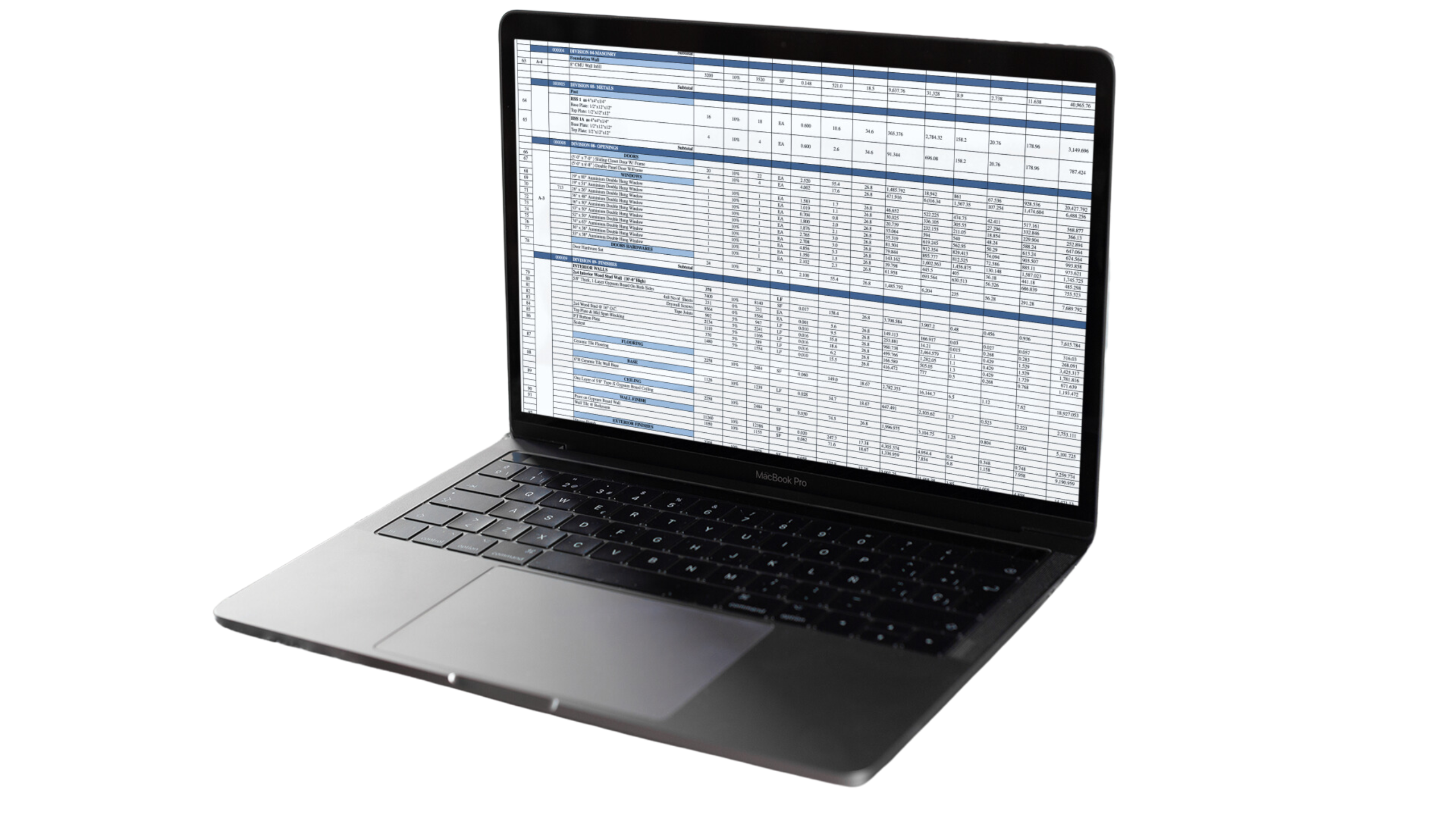
Additional Considerations and Costs for Home Security Systems
When setting up a home security system, there are a few extra factors and potential costs to keep in mind. These can vary based on where you live, the company you choose, and your specific setup. Here’s a breakdown of what to consider:
Permits and Fees
Some counties or cities require permits for installing a monitored security system. The home security company should inform you if a permit is necessary and guide you through the process. If not, contact your local government office. Without the proper permit, you could face high false alarm fees.
Additionally, be prepared for sales or service taxes on your equipment and monitoring services. These taxes vary by city, county, and state. Check your billing statements to understand how taxes affect your total costs. Permit fees generally range from $60 to $120, depending on your area.
Seasonal Discounts and Bundling Options
Many companies offer promotions, such as discounts on upfront costs or free starter equipment, if you commit to a long-term monitoring contract. Some providers also run seasonal incentives, making it worthwhile to shop around during holidays or special sales.
If your home internet or phone provider offers security services, bundling them together can save you money. Such bundles may reduce costs by $15 to $40 per month.
Surveillance Cameras for Smaller Spaces
For small apartments or simple setups, standalone surveillance cameras can be an affordable option. These cameras typically cost between $480 and $960. They allow you to monitor your home while you’re away and often include features like remote access, motion detection, and night vision.
GSM Chip Monitored Service
GSM (Global System for Mobile Communications) technology is widely used in wireless home security systems. It links your alarm system to your cell phone, enabling real-time notifications and remote access. Many security providers rely on GSM chips as part of their wireless solutions. Expect GSM-enabled systems to add $60 to $120 to your initial setup costs.
Avoiding Unnecessary Costs
A reputable home security company won’t push unnecessary equipment, pressure you into quick decisions, or surprise you with hidden fees after signing a contract. To protect yourself, ask for a clear breakdown of costs and read the fine print carefully.
Some companies offer lifetime warranties on equipment, but these are often tied to active monitoring contracts and may require regular equipment testing. Ensure you understand these terms before signing up.
Research and Customer Reviews
Before committing to a company, check its reputation with the Better Business Bureau or other review platforms. Look for complaints about hidden fees, poor customer service, or defective equipment. A little research upfront can save you money and frustration later.
Insurance Discounts and Requirements
Having a monitored home security system can lower your homeowners insurance premiums by 5% to 24%. Systems with advanced features, such as fire detection and smart home integration, typically offer the largest savings. Check with your insurance provider to see if you qualify.
In some cases, your insurance policy might require you to install a security system. This is particularly common if your home has been burglarized before or is in a high-crime area. Installing a system in these cases not only meets insurance requirements but also provides peace of mind.
Conclusion
A home security system is an essential investment for protecting your property and loved ones. With a variety of options ranging from basic unmonitored systems to advanced professionally monitored setups, homeowners can find solutions tailored to their budgets and needs. Costs vary widely, influenced by factors like installation complexity, equipment type, and additional features such as smart home integration or remote monitoring. By carefully evaluating options, including wired vs. wireless systems and monitored vs. unmonitored plans, you can make an informed decision. Ultimately, a well-chosen security system enhances safety, convenience, and even potential insurance savings, offering peace of mind.
Frequently Asked Question
The cost of installing a home security system generally ranges from $900 to $2,400, with the national average at $1,680. Budget-friendly systems start as low as $96, while high-end, professionally monitored systems with advanced features can cost up to $5,400.
- Monitored Systems: These systems include professional support, alerting monitoring centers during emergencies. Costs include monthly fees ranging from $4 to $72, with added equipment and installation charges.
- Unmonitored Systems: These are DIY systems without professional monitoring. They are more affordable, with prices ranging from $100 to $600, but the responsibility of responding to alerts falls on the homeowner.
Key factors include:
- Type of system (wired or wireless).
- Equipment features and brand.
- Installation complexity.
- Monitoring fees.
- Activation fees and optional add-ons.
Professional installation typically costs $75 to $180 per hour, depending on the complexity of the setup. Basic wired systems can be installed within hours, while advanced systems may take up to two days.
Yes, DIY systems are generally more affordable since they eliminate professional installation costs. For instance, wireless systems are easy to install and can save up to $600 in professional fees.
Here’s a cost breakdown for common equipment:
- Motion Sensor: $24 - $240
- Siren: $30 - $240
- Door/Window Sensors: $30 - $360
- Floodlight: $30 - $330
- Control Panel: $60 - $480
Smart systems offer:
- Remote control of devices via smartphone or voice assistants.
- Integration with smart locks, thermostats, and lights.
- Advanced automation features for added convenience. These systems typically cost $840 to $6,000, depending on features.
- Wired Systems: More reliable with no signal interference; ideal for new constructions but may require costly wall repairs.
- Wireless Systems: Easier to install and upgrade; may experience signal disruptions but offer advanced features.
Here’s a summary of monthly fees:
- Ring: $4 - $12
- Abode: $7 - $24
- SimpliSafe: $18 - $30
- ADT: $42 - $60
- Guardian: $54 - $72
Yes, homeowners can save 6% to 24% on insurance premiums by installing security systems. Advanced systems with features like fire detection or smart home integration often qualify for the highest discounts.
Comprehensive Trade-Specific Estimates
At Estimate Florida Consulting, we offer detailed cost estimates across all major trades, ensuring no part of your project is overlooked. From the foundation to the finishing touches, our trade-specific estimates provide you with a complete and accurate breakdown of costs for any type of construction project.

Testimonials
What Our Clients Say
We take pride in delivering accurate, timely, and reliable estimates that help contractors and builders win more projects. Our clients consistently praise our attention to detail, fast turnaround times, and the positive impact our estimates have on their businesses.
Estimate Florida Consulting has helped us win more bids with their fast and accurate estimates. We trust them for every project!

Steps to Follow
Our Simple Process to Get Your Estimate
01
Upload Plans
Submit your project plans, blueprints, or relevant documents through our online form or via email.
02
Receive Quotation
We’ll review your project details and send you a quote based on your scope and requirements.
03
Confirmation
Confirm the details and finalize any adjustments to ensure the estimate meets your project needs.
04
Get Estimate
Receive your detailed, trade-specific estimate within 1-2 business days, ready for your project execution.


